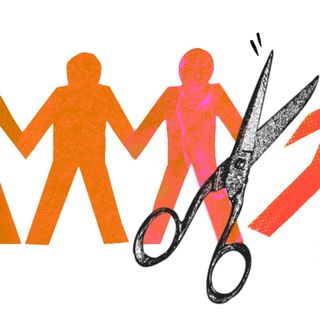
Daily Wage Workers Account For Over a Quarter of Suicides in India: NCRB
The report shows that daily wagers accounted for more than 25% of India’s total suicides, highlighting class barriers in mental healthcare.

The National Crime Records Bureau (NCRB) in its latest Accidental Deaths and Suicides in India report, stated that daily wage workers accounted for more than a quarter of all profession-wise suicides reported in the country in 2021. This is the second consecutive year of daily wage workers constituting the largest share among professionals to die by suicide. The report further states that in 2021, the rate of increase in suicides in this category was higher than that of the national average. The category that reported the second highest number of deaths by suicide was self-employed persons. These statistics highlight how mental health is a class issue and point to how current, individualized approaches to addressing it can be inadequate.
Right now, Instagram pages have popularized mental health conversations all over the internet. In the context of stigma, taboo, and inadequate public health infrastructure to address mental illness, mental health conversations moved to social media. Social media accounts have for the last several years emphasized the need for going to therapy and being receptive to one’s own mental health needs, and have espoused the virtues of self-love and self-care. “What started as a tool of resistance for the marginalized is now restricted to able-bodied, upper class, upper caste individuals almost exclusively,” wrote Rohitha Naraharisetty in The Swaddle, about how self-care mental health discourse online frequently post affirmations, remind the user to keep hydrating, and at times ask them to “just breathe” — pointing to a capitalist takeover of the conversation.
In one sense, these pages have shifted the gaze on mental health issues, looking at them as problems plaguing isolated individuals as opposed to responses to oppressive social structures like class, caste, race, gender, and family, that individuals occupy. They also pose the danger of taking away focus from the structural exploitation that often lies at the root of mental health issues, (and how mental health treatment may reinforce those structures instead of addressing them.)
Such an approach, combined with the social media expectation of maintaining a certain standard of aesthetics, has meant that expensive therapy and capitalist expressions of self-love are placed at the center of mental health discourse. Oppressive structures like caste, class, and gender all determine a person’s mental health in a significant way. The denial of access to basic freedoms and equality is bound to have a lasting impact on one’s mind, but with no recognition of how structures like caste and class affect mental health, questions of affordability and access to quality mental healthcare have also taken a back seat. This leads to a situation where specific population groups that may require the most attention and care due to their structural disadvantages are left out of the conversation.
Related on The Swaddle:
We Need to Reframe Mental Health as a Social Justice Issue, Not a Personal Problem
Another misleading yet common perception on the internet — at least partly influenced by the inaccessibility of therapy, medication, and other recourses; and perhaps, partly, by the aestheticization of mental health discourse on social media — is that depression is a rich person’s disease. The myth goes that the poor simply do not have the luxury or time to think about their mind; instead, they are busy working hard. Such a take does negate the seriousness of mental illnesses, especially in a world where speaking about mental health is taboo. However, it also inadvertently points to how current mental healthcare systems are centered around the privileged by way of access.
A person’s class, caste, gender, and race, all determine what level of awareness society allows them, and the quality of life they can expect. Ignorance of the vocabulary of mental health, then, doesn’t necessarily imply the absence of mental illness — if anything, it points to the inaccessibility of the conversation itself.
That some of the most structurally disadvantaged groups of people are the most affected is telling. In the NCRB report, besides daily wage workers and self-employed persons, housewives accounted for more than 10% of the total suicides in the country. Students and unemployed persons also made up a significant share of the report — all of which points to not only systemic failures in the accessibility of treatment but also the gaps within mental health discourse that predominantly puts the onus of mental health on individuals rather than systems.
All these categories, moreover, comprise people whose social precarity determines their mental preoccupations in a significant way. Lack of access to a regular and sustainable income, and the devaluation of labor, for instance, may lead to financial insecurity. Further, they may have to face regular hierarchical violence (daily wagers from employees, housewives from their husbands and in-laws, students from their parents and seniors). The NCRB report then acts as a reminder that our mental health is rarely ever isolated from our social location — and that mental healthcare is incomplete without acknowledging that.
If you are having thoughts of suicide, please know that you are not alone. If you are in danger of acting on suicidal thoughts, call the Sneha 24-hour hotline at 91 044 2464 0050 / 91 044 2464 0060. If you are depressed or having thoughts of suicide, iCall is available Monday through Saturday, 8am to 10pm at 91 022 2552 1111.
Amlan Sarkar is a staff writer at TheSwaddle. He writes about the intersection between pop culture and politics. You can reach him on Instagram @amlansarkr.
Related


Research Shows Social Exclusion Is a More Common Form of Bullying Than Physical, Verbal Attacks
